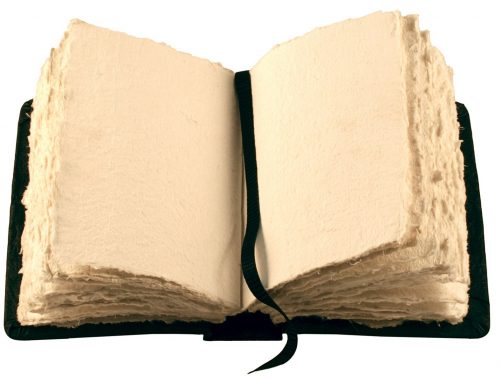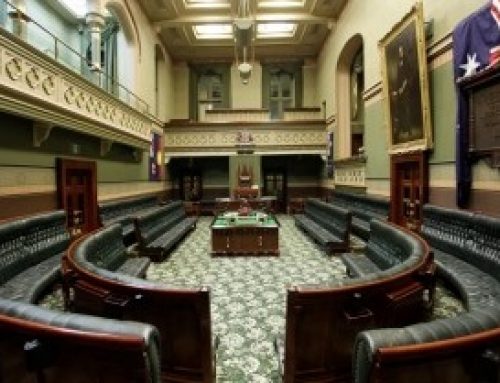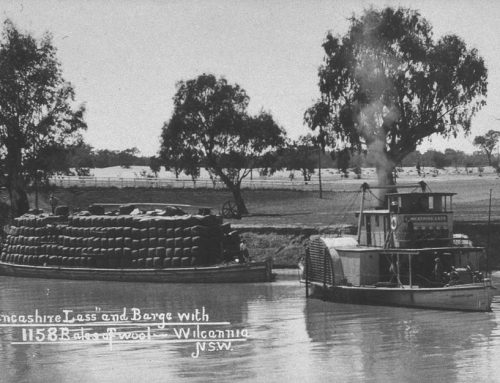Well Ive been digging around in the family archives again. This time searching for information from the 1950s for one of my works-in-progress. Opening boxes at our place is a bit like Christmas at times. You never know what gems youre going to discover. Authenticity is mandatory when youre writing bush stories with a historical bent as I am, so I loved this pearl that I found in 1953s September issue of The Pastoral Review & Graziers Record.  Review of Pastoral situation New South Wales The rainfall for August was well above average in most parts of NSW and ordinarily would have afforded substantial relief to seasonal conditions. The unusually late frosts however and, more recently, the hot drying winds, have combined to undo most of the good conferred by the rains. The letter goes on to talk of dwindling water supplies in the west Darling, the chance of a grass-hopper plague as well as an increased bush fire risk, with the states wool clip promising to be as good as last years. This was the decade when wool was worth a pound a pound, and the advertising is pitched towards the wealthy grazier of the period. Amidst the rainfall maps, letters and stock market summaries, is the brand new Humber Super-snipe. The car of the year is heavily advertised. Obviously the slogan, Into A New Era of Finer Motoring worked, as my family had purchased one a few years prior. The introduction of the Qantas BOAC Kangaroo route (yes, it was called that) across the continent mingles with advertisements for cattle and sheep studs. The words big framed, robust constitutions and high-yelding, lustrous wool featuring across many of the ads.
Review of Pastoral situation New South Wales The rainfall for August was well above average in most parts of NSW and ordinarily would have afforded substantial relief to seasonal conditions. The unusually late frosts however and, more recently, the hot drying winds, have combined to undo most of the good conferred by the rains. The letter goes on to talk of dwindling water supplies in the west Darling, the chance of a grass-hopper plague as well as an increased bush fire risk, with the states wool clip promising to be as good as last years. This was the decade when wool was worth a pound a pound, and the advertising is pitched towards the wealthy grazier of the period. Amidst the rainfall maps, letters and stock market summaries, is the brand new Humber Super-snipe. The car of the year is heavily advertised. Obviously the slogan, Into A New Era of Finer Motoring worked, as my family had purchased one a few years prior. The introduction of the Qantas BOAC Kangaroo route (yes, it was called that) across the continent mingles with advertisements for cattle and sheep studs. The words big framed, robust constitutions and high-yelding, lustrous wool featuring across many of the ads.  But this isnt the year Im searching for so I keep digging and find wrapped in calico and plastic a first edition copy (1916) of The ANZAC Book. Ive seen it before of course but had forgotten it had been stored in this particular container. ‘The ANZAC Book’ was initially thought of as a New Year magazine for the troops on the Gallipoli peninsula, however, the evacuation of the forces lead the editor, CEW Bean, into creating a book to commemorate the time spent by the ANZAC troops at Gallipoli. Bean called for contributions and a £5 prize was offered for the best cover design, won by David Barker. ‘The ANZAC Book’ was published in 1916 from illustrations, poems, stories and other creative works from the soldiers on the Gallipoli peninsula. Bean edited the work on the island of Imbros and it was eventually published in London by
But this isnt the year Im searching for so I keep digging and find wrapped in calico and plastic a first edition copy (1916) of The ANZAC Book. Ive seen it before of course but had forgotten it had been stored in this particular container. ‘The ANZAC Book’ was initially thought of as a New Year magazine for the troops on the Gallipoli peninsula, however, the evacuation of the forces lead the editor, CEW Bean, into creating a book to commemorate the time spent by the ANZAC troops at Gallipoli. Bean called for contributions and a £5 prize was offered for the best cover design, won by David Barker. ‘The ANZAC Book’ was published in 1916 from illustrations, poems, stories and other creative works from the soldiers on the Gallipoli peninsula. Bean edited the work on the island of Imbros and it was eventually published in London by  Cassell and Company. The book is composed of satirical and sombre pieces about the conditions of life at Gallipoli. It also provides a general outline of the April 25 landing at ANZAC Cove and the military advances, offensives and defensives undertaken in the following months until the eventual evacuation of the Allied forces at the end of December 1915. The introduction was written by General Sir W Birdwood, who explains how he named ANZAC Cove on the Gallipoli peninsula after the ANZAC forces.
Cassell and Company. The book is composed of satirical and sombre pieces about the conditions of life at Gallipoli. It also provides a general outline of the April 25 landing at ANZAC Cove and the military advances, offensives and defensives undertaken in the following months until the eventual evacuation of the Allied forces at the end of December 1915. The introduction was written by General Sir W Birdwood, who explains how he named ANZAC Cove on the Gallipoli peninsula after the ANZAC forces.
I’m yet to find the year I was originally searching for. Sleuthing is a wonderful exercise when it comes to revisiting the past.






Sounds fascinating Nicole. so great these treasures were kept and looked after so well.